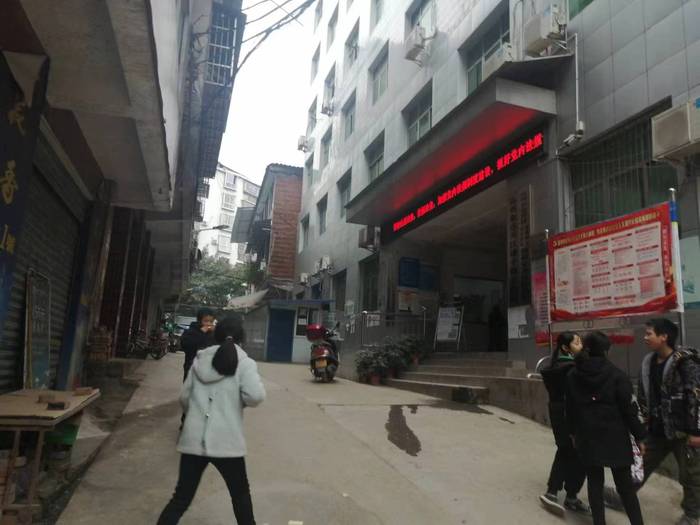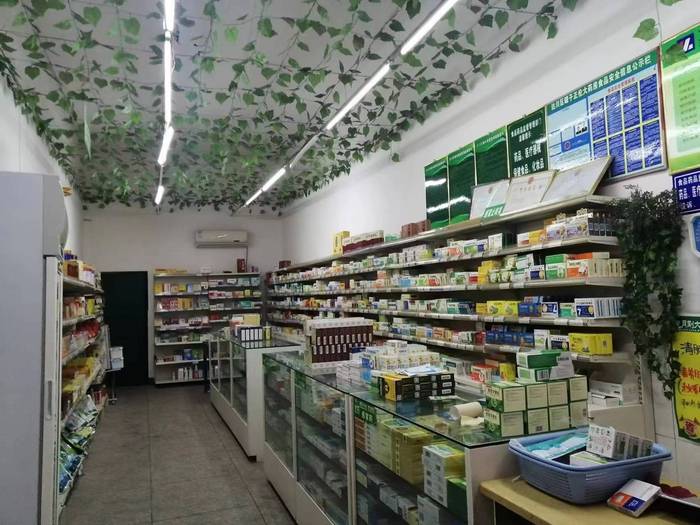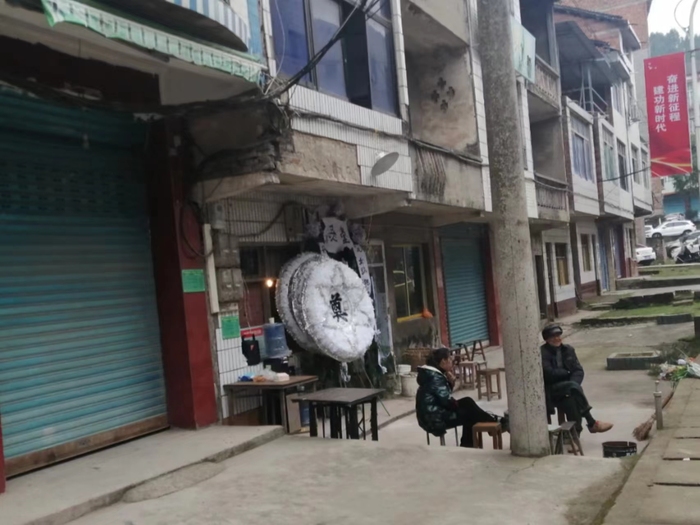The next wave that everyone fears hasn’t materialized yet. But flaws in rural primary care, exposed by the first wave, run deep.

The street of Guanzizhen. Photo by Zhao Meng
By ZHAO Meng
Even on a non-market day, the main thoroughfare of Guanzizhen is alive with shoppers. Young people back home for the Chinese New Year are cheerfully dressed. Little is left of what the rest of the country associates with the small town, or more accurately, Dazhou of Sichuan Province in southwest China, the city it belongs to.
Less than a month ago, a photo of exhausted patients receiving IV treatment in an overcrowded Dazhou clinic went viral on social media. Overnight, Dazhou became symbolic of how Covid, or the Covid response, could go wrong.
A few blocks away from the town square, the same clinic is now quiet. Patients are trickling in, but most are for non-Covid conditions. “We got Covid long ago,” one told Jiemian News.

A doctor said the clinic was “almost back to normal,” but memories of December are still fresh.
“At its peak, we saw more than two hundred patients a day. More than half of them had a fever,” he said. “We are talking about a clinic that’s supposed to see only forty or fifty patients a day.”
In normal times, 38 doctors take care of Guanzizhen’s population of 30,000, about one per thousand people. This proved to be not nearly enough when everyone was sick at the same time.
Medicines were quickly depleted. A month’s supply was used up in days. For a few days, doctors could only give patients IV fluids to help them stay hydrated. A local pharmacy was so busy that extra help had to be dispatched from the regional headquarters.
“The shelves were emptied as soon as we opened,” a pharmacist said. The shelves are restocked now, but fever drugs are still in short supply. Each customer is rationed to one blister pack of ibuprofen at a time.

Although the worst seems to be over, doctors are not dropping their guard. The next wave may hit at any moment as migrant workers return home for the Chinese New Year and infect their parents and grandparents. When tens of thousands of people descend on villages populated by old, weak folks most of the year, things won’t be pretty.
It’s taking longer than expected to replenish the drug supply, but doctors are more worried about the staff working nonstop since the beginning of December, even when they had Covid. The next wave hasn’t materialized, yet.
“So far, only a few out-of-towners are back home for the holidays,” the doctor said.
Many young returnees must have already contracted Covid and are immune. It helps that patients now know how to treat themselves at home.
Small towns like Guanzizhen have had to rethink their primary care, which is both under-resourced and underused. China has a layered healthcare system divided into city (in this case Dazhou), town (Guanzizhen), and village levels. Village doctors – there is one, occasionally two, for each village around Guanzizhen – dispense pills, but villagers would rather see doctors in higher-level facilities because “village medicines are no good.”
This is not completely untrue, because village doctors are not authorized to write prescriptions for complicated conditions. They are not allowed to give injections without approval either.
The setup was completely unfit to deal with the Dazhou outbreak. Two patients died because the clinic didn't have the medicine they needed, nor the authority to prescribe it. When the photo made its rounds online, the city government banned injections and IV treatment in all hospitals and clinics.
“Some patients came to us with 40-degree fevers and were told that no treatment was allowed,” a doctor said at the time. The ban was later lifted following Jiemian News' report.
Almost all lower-level facilities are underfunded. Government disbursement is often late – a Guanzizhen clinic is still waiting for 1.8 million yuan (US$250,000) of fiscal appropriation – which causes delays in payments to pharmaceutical companies. This puts small clinics in an extremely weak position when begging Big Pharma for a few paracetamols.
Guanzizhen is building a database of the over-60s, noting chronic conditions and living arrangements. For those living alone, the town helps them replenish their medications.
Community workers have given out cold medicine and hand sanitizers, but many fear these measures are far from enough. Old people are dying at a higher rate than usual.
“There are fireworks almost every day, from all directions,” said a tailor at a burial robe shop, referring to the fireworks at funerals. HUANG Bo, who owns a funeral supply store, said he has been “working around the clock.”
TANG Lu, whose mother passed on December 31, said her 75-year-old mother had suffered from diabetes and had been in and out of hospitals in her last years. A neighbor also died recently, leaving three children behind. She was only 42, but the cause of death is unknown. There is no official Covid death count.

A local doctor estimates the number of patients hospitalized for chronic conditions is “10 to 20 percent” more than usual. A government official said 60 people in Guanzizhen died in December for “various reasons.” Winter has always been tough for old people, he said. But the number is still “somewhat higher than before.”